Choosing high quality knives for your kitchen arsenal...
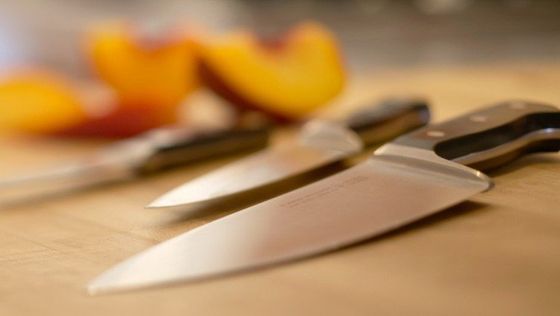
Knives are the most used and essential tools an any kitchen. They are used in the preparation of pretty much every meal and in almost every culinary preparation style you may do. Purchasing the right knives for your kitchen arsenal is important and should not be taken lightly after all, a great knife will save you time and trouble in the kitchen.
When purchasing good quality kitchen cutlery, most home chefs will gawk at the price and, unless they are really serious about cooking, settle for the cheaper alternative; BUT, what most do not realize is that a good quality knife, properly maintained, and not abused can last 30-50 years which means that even the most expensive knife will end up costing you only a few dollars a year over its lifetime and it will probably be the last knife (knives) you will ever have to purchase.
There are a lot of manufacturers of good quality knives out there BUT not all knives are created equally; it is common to find 'fashionable' brands selling poor quality knives at exorbitant prices, while it is also possible to find high quality knives at lower prices manufactured by lesser known brands. The choice of manufacturer and style is up to the individual and their budget; what is truly important is that the knives you choose have durability, strength, good handling, and endurance but most importantly how they feel in your hand.
For safety and efficiency, every knife you use should have a grip that fits and feels comfortable in your hand when being held in the manner that it is used and the knife should feel well balanced between the handle and the blade. You need to focus more on how the knife feels to you and its overall quality rather than brand.
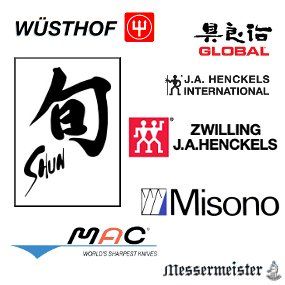
Most good quality knives are made from 'high-carbon steel' mixed with stain-resistant alloys to keep the metal from pitting, staining, and rusting which is commonly listed as 'high-carbon stainless steel'. There are all kinds of grades of steel used for the manufacturing of knives which could take hours to expand upon, but all you really need to make sure of is that 'high-carbon steel' is listed in the blade material.
Look for blades that are forged meaning that they have been formed through a process of pounding heated metal in to shape rather than stamped out of a sheet, these knives will be sharp right out of the box, hold an edge reasonably well, are (usually) well balanced, and, yes, are an investment. They should also have a full tang meaning that the knife is one piece of metal with the two handle pieces pinned or riveted to it (or in the case of some, the handle is formed from the same piece of metal as the blade either as one piece or, most commonly, welded to the blade).
Though it should have no bearing on your decision what-so-ever, when it comes to 'mass produced' knives, I personally like knives made by Global and Zwilling J.A. Henckles though there are plenty of others of equal quality - in general they are well balanced, easy to hold, and just 'feel right' in MY hand compared to many of the others.
Choosing the Proper Knives for You...
When choosing knives, the first thing to consider is whether you want German (Western), Japanese, or hybrid style knives:
German (Western) style Knives:
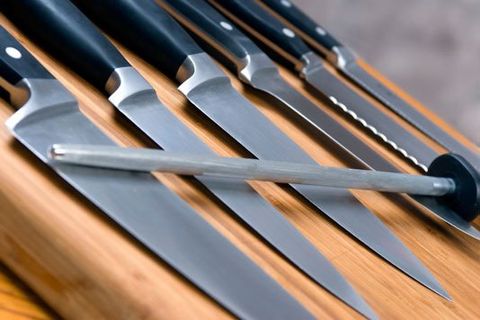
German (Western) style knives are the style that most cooks/chefs are accustomed to; they are designed to provide power, have decent precision, and to be as versatile as possible in the kitchen.
German (Western) style knives have thick, heavy, 'wedge' shaped blades that feel solid and strong and help let the momentum of the knife do the work for the chef. German (Western) knives also have a slight curve to the cutting edge that allows for a 'rocking' motion of the knife on the cutting surface to facilitate chopping and mincing.
Though times are changing, most German (Western) style knives have a 'double beveled' edge; in other words, the blade is ground from both sides forming a 'V' and are ground at an angle of between 20 - 25 degrees which is meant to be 'just sharp enough' and take lots of abuse without chipping, notching, cracking, or breaking.
The steel used in the manufacture of German (Western) style knives is softer and tougher than that used in Japanese made knives making them easier to sharpen but require more frequent maintenance to keep them sharp.
Traditional Japanese knives are extremely specialized for very specific tasks; the Usuba and Nakiri
have chunky, rectangular blades similar in appearance to a slender Meat Cleaver
designed for slicing vegetables, the Deba and Honesuki with triangular, wedge-shaped blades designed for boning / butchering meat, fish, or poultry, and the Yanagi
with its extra long blade designed for slicing sashimi and other raw meat to name the most common.
These traditional Japanese knives have flat cutting edges (not curved to allow for a 'rocking' motion when chopping) and are very sharp; they are designed for extreme precision. Traditional Japanese knives are generally more difficult to control without a lot of practice but reflect Japanese cuisine where extreme precision in knife work is of paramount importance.
Traditional Japanese knives are generally made from a very hard, brittle steel and (though not exclusively) have a single bevel or 'chisel' edge; in other words, the blade is ground on only one side forming an edge similar to that of a chisel with a bevel of typically between 10 - 15 degrees making for a much finer edge and a much sharper knife. The issue here is that the edge is very delicate when compared to German (Western) edges and are prone to chipping, notching, cracking, and even breaking if abused - as already stated, these knives are designed for precision NOT for 'hacking'.
I personally don't recommend traditional Japanese knives for the average person. Though they are fabulous pieces of precision engineering and wonderful knives - unless you are planning on becoming a sushi chef or are already trained / experienced in the art of traditional Japanese cuisine, they are probably not necessary and definitely the most expensive in most cases!
Traditional Japanese Knives:

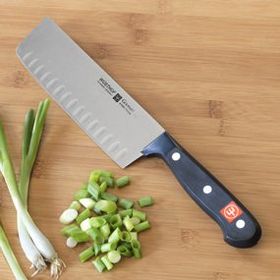
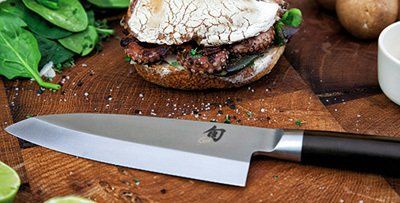
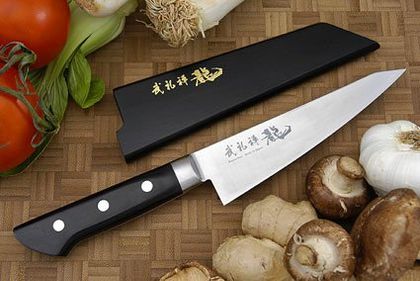
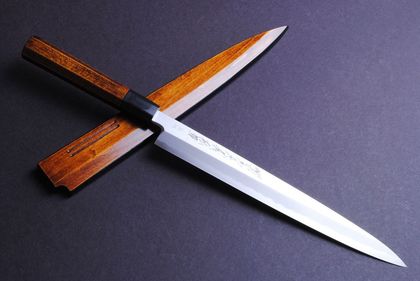
Hybrid Knives:
Santoku
and Gyutou
knives are hybrids; these knives combine aspects of both Japanese and German (Western) style knives. Santoku
Knives have the blocky tip of the traditional Usuba
and the thinner profile and lightly curved cutting edge of German (Western) knives making them excel at slicing, chopping, and mincing which is why the word santoku means 'Three virtues'.
Gyutou
blades are designed to perform the standard tasks that German (Western) knives perform; they have the same general appearance of German (Western) blades and are heftier and a little less precise than the Santoku
but the curve of the cutting edge is more pronounced making them better at the 'rocking' motion that German (Western) knives are known for - it is no wonder that these blades are commonly referred to as 'Japanese Chef's Knives'.
Both the Santoku
and Gyutou knife styles are more versatile than the traditional Japanese blades and are a great substitute for most German (Western) style blades. Generally speaking, the steel used in the manufacture of these hybrids is very similar (if not the same) as that used in the manufacture of German (Western) style knives; soft but extremely tough. These hybrid knives typically have a 'double beveled' edge just like that of the German (Western) style knives but ground at a shallower angle (10 - 15 degrees) making them much sharper which is great but does make the knife a little harder to sharpen and the edge more delicate.
Choosing your knives...
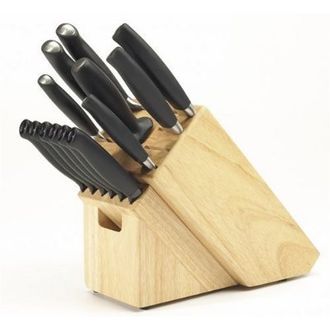
The big knife sets available almost everywhere and from every manufacturer seem like a good deal and often look great sitting on the kitchen counter; they make great gifts and make buying easy but they are not the best option... Knife sets tend to include a number of knives that will never get used by the average home cook.
The average home chef really only needs 3 or 4 different 'essential' knives in their kitchen arsenal so it is actually a far better value to purchase individual knives and get only those that you actually need and will use.
Because of these reasons, I do not recommend purchasing any large knife set no matter the manufacturer but, you may feel differently.
What you actually NEED...
Chef's Knife
A Chef's Knife is the 'go to' blade for 90% of the cutting jobs in the kitchen - it is your slicer, chopper, dicer, and general cutting knife in your kitchen arsenal. I suggest an 8" Chef's Knife but you can get a 6" or 10" if you wish; it is up to your personal preference and comfort. A 6" Chef's Knife may be too small for some kitchen jobs while a 10" can be a little unwieldy for many people - any longer than 10" and it just becomes 'flashy' overkill! Longer/heavier blades do give you more leverage when cutting larger items but if you are not comfortable with the size you will trade one good point for a host of bad so choose the length that you are most comfortable with.
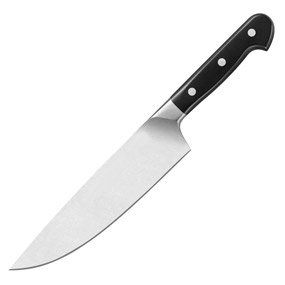
-OR-
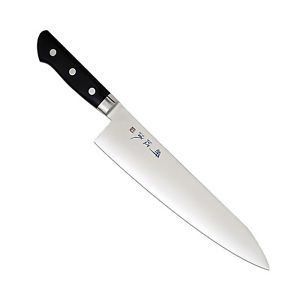
Large Gyutou
A Gyutou is a great alternative for the traditional Chef's Knife
and one that many cooks are switching to. These 'Japanese Chef's Knives' look and feel similar to their western counterparts but they are lighter and definitely sharper than the western Chef's Knife
with good edge retention. Just like the western Chef's Knife, the Gyutou typically comes in lengths ranging from 7" to 10 1/2" in length (though there are shorter and longer). Just like with the western Chef's Knife, I suggest an 8" model however, whatever length is comfortable to you is the one you should choose.
-OR-
Large Santoku
A Large Santoku is an excellent alternative to a traditional Chef's Knife
and works well for vegetables, boneless meats, fish, and most 'everyday' needs. Just like a western Chef's Knife, the Large Santoku is your slicer, chopper, dicer, and general cutting knife in your kitchen arsenal. Large Santoku Knives are typically 7" in length (you can sometimes find 8 and 9 inch models by a few manufacturers but they seem to be rare).
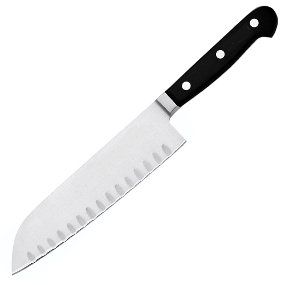
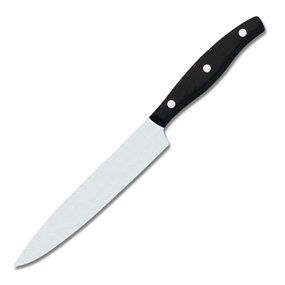
Utility Knife
A 5" Utility Knife is a great addition to your kitchen arsenal; It is perfect for small jobs that the Chef's Knife
is just too unwieldy for. It is your slicer, chopper, dicer, and general cutting knife in your arsenal for smaller jobs PLUS it can be used as your Paring Knife
for peeling and cleaning up fruits/vegetables as well as 'delicate' or 'fiddly' jobs.
The 5" size makes it usable for some filet work AND can be used by children (if you trust them to help with cutting in the kitchen) because it is just the right size for those with small hands. As stated: a 5" Utility Knife can double as a Paring Knife
for delicate work though, without a little practice, it may be too large for some people for this type of work - if you find this to be true, then the addition of a smaller Paring Knife
to your kitchen arsenal is recommended (SEE BELOW).
-OR-
Small Gyutou
A small 4 1/2 - 5 inch, Gyutou (somewhat hard to find) is an excellent alternative to the western Utility Knife. With its similar design but much sharper edge, a Small Gyutou makes small jobs a breeze and paring duties much more precise - however, just like with the western Utility Knife, if you find the size too big then the addition of a small Paring Knife
to your kitchen arsenal is recommended (SEE BELOW).
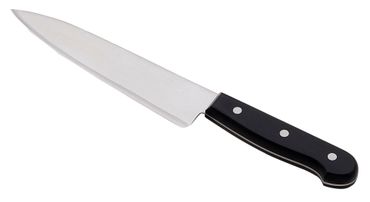
-OR-
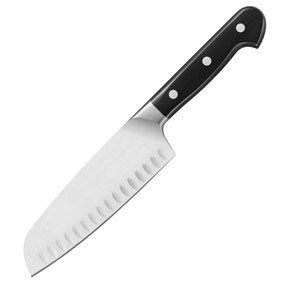
Small Santoku
Just like the Utility Knife, this is your slicer, chopper, dicer, and general cutting knife for smaller jobs. A small Santoku Knife is typically 5-5 ½ inches in length and is a great alternative to a Utility Knife for everything EXCEPT doubling as a Paring Knife; with its wide, rounded end the Small Santoku is not as versatile when it comes to paring duties so the addition of a small Paring Knife
to your kitchen arsenal is recommended (SEE BELOW).
-POSSIBLE ADDITION-
3 - 3 1/2 inch Paring Knife
If you choose to go with the Small Santoku
or are uncomfortable with using a larger Utility Knife
or Gyutou
for paring duties then I suggest that you get a dedicated, small Paring Knife in addition to these blades. At 3 - 3 ½ inches, this is a good size for delicate and fiddly cutting but really too small to be used for anything else; any larger and you are just doubling your Utility Knife
or Small Gyutou
and negating the reason for a smaller, more controllable blade.
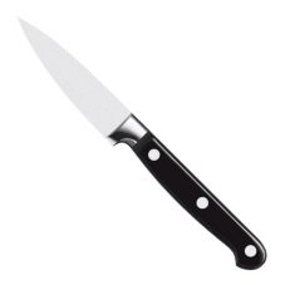
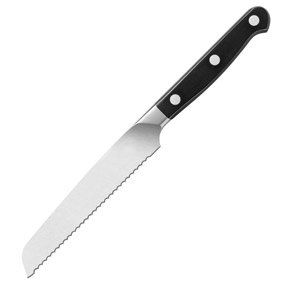
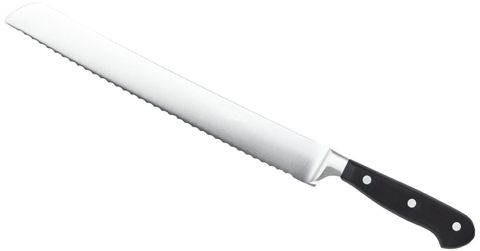
Serrated Bread / Utility Knife
As you may know, cutting bread (and some other ingredients) with a smooth blade doesn't work all that well so a Serrated Utility/Bread Knife is a must in your kitchen arsenal. Not just for slicing bread, this blade can be used to slice and cut up fatty meats, firm fish, tomatoes, sandwiches, and firm skinned fruits with soft insides. An 8" Serrated Utility/Bread Knife is a good usable size but does not have the extra 'long pull' of longer blades meaning that you may have to 'saw' a little when cutting breads compared to longer models but it is worth the trade off for versatility.
If you cut a lot of bread or just HAVE to have a long Bread Knife (which is useful I admit but not a requirement) then by all means, get one. A 10"+ blade gives you a really nice 'long pull' that makes for cutting breads really easy and all but eliminates 'squishing'; BUT, its length makes it unwieldy for most people and becomes generally useless for anything other than bread and sandwiches because of its size.
If you do purchase a 10"+ Serrated Utility/Bread Knife instead of an 8" one, then you should also pick up a 5 - 6" Serrated Utility Knife
as well to use for fatty meats, firm fish, tomatoes, and firm skinned fruits. (The reason for the shorter length than that of the recommended 8" Serrated Utility/Bread Knife is simply because if you have a 10"+ mode then you won't have to use this one for bread and sandwiches so you don't need the longer 'pull').
Honing Steel / 'Sharpening Steel'
I suggest adding a Honing Steel that is at least 10 inches in length and a good quality to your kitchen arsenal - A good Honing Steel is a must to maintain your knives edge(s) and keep them in their best cutting condition.
Many refer to these as a 'Sharpening Steel' but they are NOT sharpeners. A Honing Steel does not put a new edge on the blade (which is what a sharpener does) instead, a Honing Steel realigns the microscopic variations in the blades edge so that they are all in a row 'honing' the edge. This makes the blade sharper than it would be when all of those microscopic 'burs' are all over the place making the blade serrated on a microscopic level and reducing its cutting ability.
Honing your blades before every large cutting session also reduces how often you have to sharpen your knives which makes them last longer which is a good thing when you are spending quite a bit for really good knives.
It must be noted: A Honing Steele is NOT for use on an intentionally serrated blade... using a Honing Steel on an intentionally serrated blade dulls the edges that exist on the sides of the serrations dulling it and rendering the knife useless.
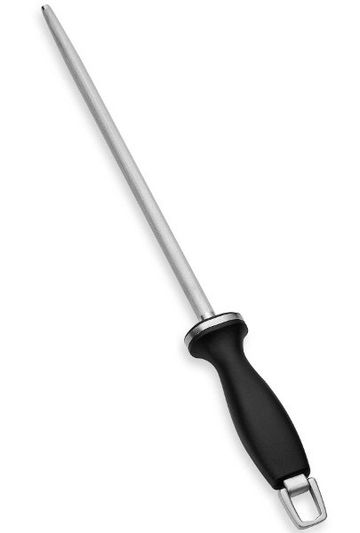
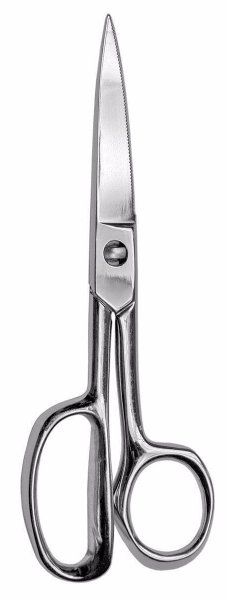
Kitchen / Utility Shears
A good sturdy set of Kitchen/Utility Shears should be in every chef's arsenal of tools. They are endlessly useful for all kinds of jobs around the kitchen - they can be used to break down poultry, snip up small amounts of herbs like chives and cilantro, to cut up bacon (before frying) for soups and bacon bits, they can be used to cut your pizza in a pinch (NO REALLY!), they are great for cutting up dried fruits, and they can be used to cut things VERY small and even directly into the pot or pan!
When looking for Kitchen Shears, make sure that they are nice and hefty, they should feel sturdy and well made, they should have nice long handles compared to blade length to ensure that you can get good cutting leverage, they should fit your hand, and (probably the most important, in my opinion) they should separate for cleaning so that you can get at all the surfaces not leaving 'gunk' between the blades at the pivot.
NEVER use your good Kitchen Shears open bags and packages, to cut parchment paper, or any non-food related cutting - paper is the most dulling thing on the planet to scissors and knives and you can get a decent pair of scissors at the dollar store to do that stuff!
That's it, just 3 essential knives and 5 - 7 total pieces will cut almost any food item you will ever need and even help maintain those new, high quality knives!
You may find that you want or personally need knives other than the essentials listed above for any number of reasons so I have included a few of the more popular ones that you may require that I entitle...
Definitely Useful But, NOT Essential...
Fillet Knife
Fillet Knives typically come in lengths ranging from 6 - 11 inches, are very thin and flexible and are a must if you prepare a lot of fish. The traditional Fillet Knife design has an upward sweeping blade but many modern designs have abandoned this feature going with a 'straight blade' design very similar to that of Boning Knives
(SEE BELOW).
Though primarily designed for use with fish, the uses of this knife are much more versatile; they are very useful for trimming fat from meat and poultry as well as trimming meats in general, de-boning, and even for removing skin from mangos and avocados if you are so inclined. A 7 ½ - 8" Fillet Knife is a good, controllable, versatile length that works for most applications any chef/cook may need.
Though a Fillet Knife may be designed for use primarily with fish rather than tougher meats, it works just as well as a Boning Knife
(SEE BELOW) in most cases and with its thinner and more flexible blade is much more versatile therefore the more useful of the two in your kitchen arsenal.
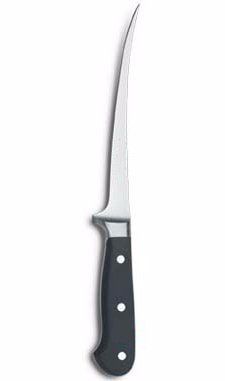
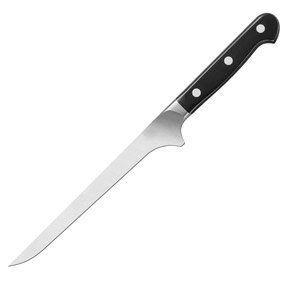
Boning Knife
Boning Knives look very similar (in many cases) to a Fillet Knife
but are NOT the same thing. The blade of a Boning Knife is thinner than most other kitchen knives but is not as thin as that of the blade of a Fillet Knife.
Boning Knives are available with either 'stiff' or flexible blades and are typically 'straight bladed' meaning that they do not have an upward sweep to the blade like that of traditional Fillet Knives.
These heavier, tougher blades (compared to those of Fillet Knives) are designed for use with larger and tougher pieces of meat like pork, beef. lamb, and poultry where more force is needed during the boning process as compared to fish.
Just like Fillet Knives, Boning Knives have very sharp tips that are meant to easily pierce meats. A 'flexible' bladed Boning Knife is a great substitute for a Fillet Knife
though it cannot produce as thin of cuts making it slightly less versatile in your kitchen arsenal.
Meat Cleaver
If you plan on doing any home butchering, then a Meat Cleaver is a MUST to have in your kitchen arsenal!
These thick, heavy, almost hatchet like blades are excellent for chopping through thick muscle, sinew, and even smaller bones. They are utilized anytime that force is required (or preferred) over precision.
Meat Cleavers aren't JUST for butchering large pieces of meat, they are also brilliant at splitting up cooked ribs and separating chicken thighs so they make an excellent addition to your BBQ supplies.
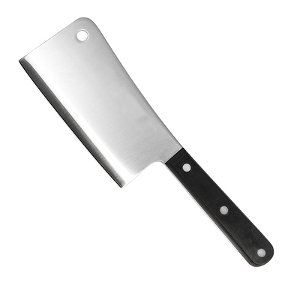

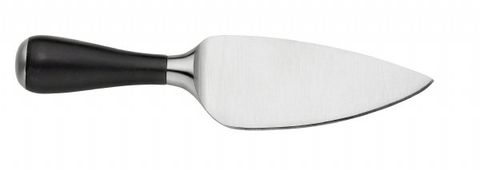
Cheese Knives
If you eat, serve, or use a lot of cheese (like for a cheese plate - not necessarily for cooking) then you might want to add a Cheese Knife or two to your kitchen arsenal. There are actually several specialty Cheese Knives available each designed for specific types of cheeses...
The most common (the one most people are familiar with), known generically as a 'Cheese Knife' is actually only designed for semi-hard cheeses which tend to be 'sticky' (ie Cheddar, Monterey Jack, Colby, Swiss, and the like) which is why they have holes in the blade to prevent the cheese from sticking. The blade is serrated and is thinner at the handle and thickens towards the tip of the blade; Some have a forked tip that is used for serving the slices. This type of Cheese Knife is the most likely the only specialty Cheese Knife any typical individual would need or want.
Soft cheeses (also known as 'Creamy' or 'Spreadable' cheeses) such as Brie, Camembert, and Goat Cheese require only a thick, heavy bladed knife that does not have to be sharp. Specialty Cheese Knives for these types of cheeses are typically 'stubby' with a broad blade and rounded end looking something akin to an oversized butter knife or miniature cake spatula.
Hard (also known as 'Grating') cheeses require heavy bladed knives such as a Chef's Knife
to cut them but specialized knives such as the Parmesan Cheese Knife which is short, thick, and stubby similar to an oyster knife are available.
Carving / Slicing Knives
If you make a lot of large roasts, whole chickens, turkeys, or hams then you may want to add a Carving / Slicing Knife to your kitchen arsenal. Carving and Slicing Knives both have very long, thin blades (between 8 and 15 inches) that are meant for slicing thin cuts from all types of large cooked meats either hot OR cold (think cold cuts). These knives are also really good for large fruits such as watermelon, cantaloupe, and even pineapple. If you plan on purchasing one or find a need, I suggest a Carving / Slicing Knife that is at least 8 ½ inches in length (10 - 12 inches is better) along with a matching carving fork (matching simply for presentation if doing tableside carving).
Some Carving Knives look suspiciously like Chef's Knives
in shape while some look more like Slicing Knives
which typically look significantly different - Both work exceptionally well when carving meat but the heavier, more rigid blade of the 'true' Carving Knife tends to be better for 'bone in' items where extra leverage and the cutting through of tougher connective tissue may be required.
Traditional Slicing Knives are meant to slice very thinly through cooked meats. Their blades do not taper along their length and have 'dimples' that are meant to reduce drag and therefore 'glide' through the food; many have a rounded end.
As stated, both 'true' Carving Knives and Slicing Knives work well for carving leaving the choice of which you choose up to your preference.
NOTE: Some manufacturers offer a 'Ham Slicer' that are specially tailored for cutting ham. These 'Ham Slicers' are typically thinner and more flexible than either Carving
or Slicing Knives
and all have a rounded end - A fine knife but really just a unitasker so, not really necessary unless you just HAVE to have one.
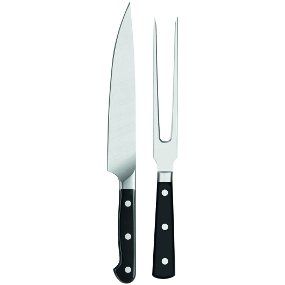
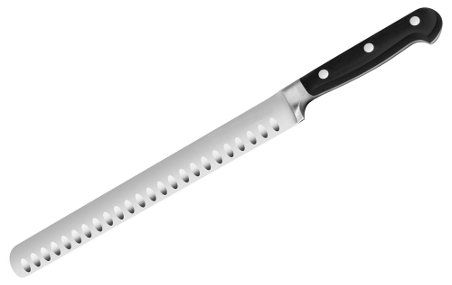
There are obviously many other types of knives out there from Vegetable Knives, Nakiri,
and Chinese Vegetable Cleavers
to Tomato / Citrus Knives, Steak Knives, and many unnecessarily 'specialized' knives but I have covered pretty much every knife, and then some (in my opinion), that you may ever need in your kitchen arsenal.
You may find that you want multiples of the knives you use the most frequently to make life in the kitchen easier for you AND if you cook with others on a regular basis but that is entirely up to you and YOUR needs.
REMEMBER: It is the quality and how the knife feels to you that is important! You may find that a knife by one manufacturer feels better than another's no matter which knife it is so don't be afraid to mix and match (does it really matter if they all match? You typically are not cooking for an audience are you?)!
Once you take the leap and invest in high quality kitchen cutlery you need to make sure that you store and maintain your knives properly in order to get the most out of them -
A few words on storage and maintenance...
The proper storage and maintenance of your knives will help them last for years and keep their edge longer between sharpening.
A magnetic knife strip, a knife block, or individual plastic or wood sheaths are the best way to store your knives - DO NOT store them in a kitchen drawer (unless using individual sheaths to protect their blade / edge or have a 'built in' drawer knife block).
One of the best storage options is the use of a magnetic strip - not only does it keep your knives safe (if used appropriately), but it keeps them up, out of the way, and easily accessible with a quick look. If utilizing a magnetic strip, make sure that you twist the blade towards the spine (away from the edge) to release it from the magnet DO NOT SLIDE - this keeps the blade from getting scratched up, the edge from dulling, and prevents deformation especially of thinner blades.
Make sure that you never place your good knives in the dishwasher - you should wash your knives by hand immediately (or as soon as possible) after use, dry them thoroughly, and put them back into their proper storage all of which keeps you and others safe and prolongs the life of your knives.
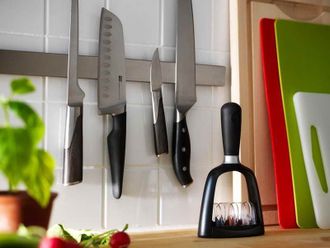
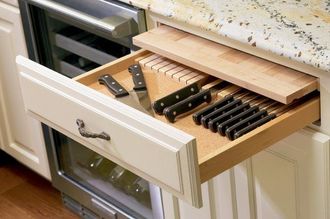
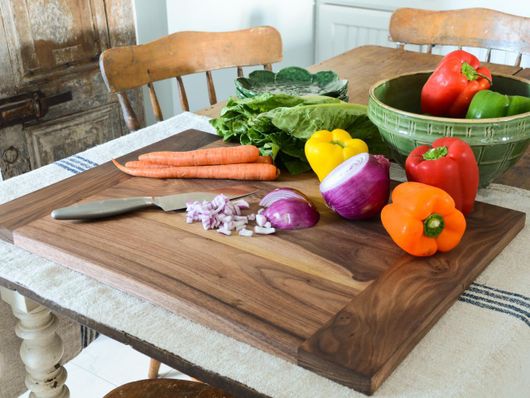

NEVER cut on glass or ceramic cutting boards (or metal surfaces) which are very hard and dull the edge of your knives very quickly. Wood or compressed paper cutting boards are excellent for everything other than raw meats - both are relatively soft and wont dull your blades very quickly. A BIG PLUS: Wooden cutting boards have the distinction of, well, being gorgeous! With all of the wood types and artistic ways of making the cutting boards, it can literally be like having pieces of 'natural art' in your kitchen!
Plastic cutting boards are essential for cutting raw meats because they can easily be disinfected in the dishwasher or with a bleach solution - plastic is relatively soft but it does dull the blade faster than wood or compressed paper cutting boards.
NEVER use your knives or good Kitchen Shears to open boxes, bags, or other objects - all of which will dull the blades quickly
Hone your blades before use to keep the edge in optimal cutting shape and to extend use between sharpening.
Have your knives professionally sharpened -
To achieve a proper taper on a knife blade takes skill and LOTS of practice! To ensure that your knives are properly sharpened and not damaged, let the professionals take care of it for you.
Most experts recommend that you have your knives professionally sharpened every other year (if you use them A LOT, you may want to do it about once a year) to keep them in optimal cutting performance.
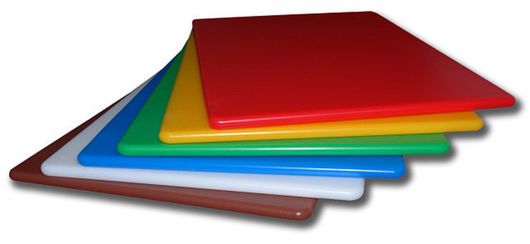
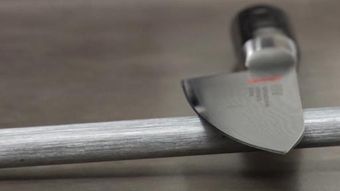
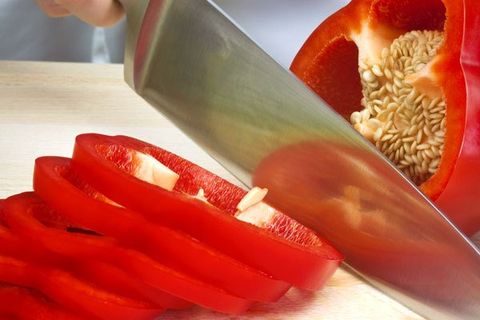
I hope that I have answered all (or at least, most) of your questions regarding kitchen knives from what makes a 'quality' knife and what to look for, to which knives you actually need, and how to properly store and maintain them for years of use!
Now, go forth and cut up your ingredients with the right knife for the job...
STAY INSPIRED!

